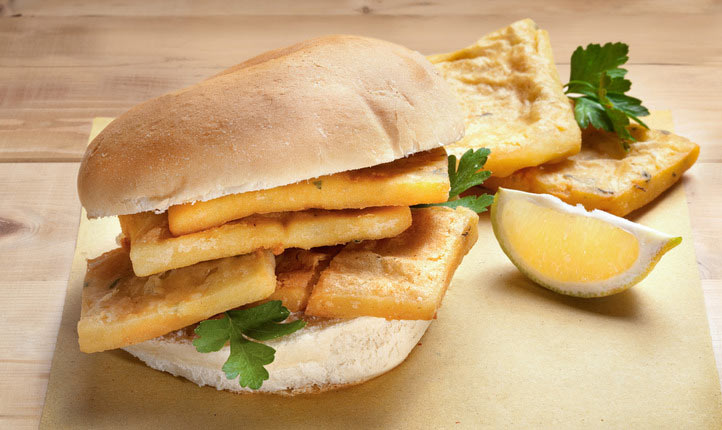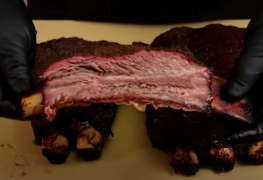 When you think of sandwiches, you might think of tuna salad, ham and cheese — maybe even a scrumptious BLT. However, what you might not think of is fried chickpea dough. That is, unless you've recently visited the sunny climes of Palermo, Italy, where panelle sandwiches are a popular lunchtime option or quick on-the-go snack. A fritter made out of spiced chickpea flour traditionally served in a mafalda roll, it is a Sicilian classic that is sophisticated in its simplicity. There are no bells or whistles here, and, if authenticity is what you're going for, no additional sauces should be added to this sandwich other than perhaps a squeeze of lemon. But how did this delicacy come to be?
When you think of sandwiches, you might think of tuna salad, ham and cheese — maybe even a scrumptious BLT. However, what you might not think of is fried chickpea dough. That is, unless you've recently visited the sunny climes of Palermo, Italy, where panelle sandwiches are a popular lunchtime option or quick on-the-go snack. A fritter made out of spiced chickpea flour traditionally served in a mafalda roll, it is a Sicilian classic that is sophisticated in its simplicity. There are no bells or whistles here, and, if authenticity is what you're going for, no additional sauces should be added to this sandwich other than perhaps a squeeze of lemon. But how did this delicacy come to be?
The origins of the panelle sandwich date back to somewhere between the 9th and 11th centuries, during the North African invasion of the island, when the Arabs began grinding the ever-abundant chickpeas to make flour. The raw flour didn't taste that great, and because there's no better way to make something tastier than by frying it up, that's exactly what they did. They added water to make a dough, some herbs and spices (namely parsley, salt and pepper), and plopped little squares of the mixture into hot oil, creating panelle.
Panelle sandwiches are still as good as they were 1,000 years ago
Other than the addition of fennel seeds instead of parsley, since its conception almost 1,000 years ago, the recipe has barely been altered. But honestly, why try to improve something that already tastes so good? The humble ingredients made the panelle sandwich accessible to all walks of life, and its delicious taste meant that it was (and still is) widely enjoyed across all social classes. In fact, if you walk around the streets of Palermo today, it is likely that you'll come across the local panellaro, who will sell you a fresh panelle sandwich straight from his portable kitchen.
Though buying a panelle sandwich from a panellaro is the most traditional way of getting your hands on one for lunch, having to book a flight to Italy makes it a little more complicated. Why not try your hand at making your own? There are some amazing ways to use a can of chickpeas, but if all this talk of sandwiches has you in the mood, a herby chickpea salad sandwich or a classic falafel sandwich should do the trick without having to source the chickpea flour needed for a panelle sandwich.
Source: mashed.com








Leave a comment